Leaves We Eat: Deliciously Healthy & Edible Leaves To Try!
Norah Clark
What are the popular leaves we eat? Some popular choices include spinach, kale, chard, arugula, and microgreens, each offering unique health benefits and potential risks.
Nutritionists often emphasize that vital nutrients and vitamins for the best health should be obtained from fresh fruits and vegetables rather than supplements. Maintaining a balanced diet based on diverse foods allows better absorption and has more positive effects on our health.
It’s common to hear someone claim they dislike vegetables. However, with countless plant species offering distinct flavors, there’s no reason to avoid them. Restricting vegetable intake could negatively impact health. If you’re someone who avoids salads or dislikes vegetable-based dishes, consider trying lesser-known options that may suit your tastes.
This guide aims to provide an overview of some of the most nutritious edible leaves for consumption.
Leaves We Eat – Edible & Delicious Leaves!
While you might recognize many of the edible leaves discussed here, you may not know about their health advantages and distinct flavors.
Undoubtedly, numerous other leafy vegetables could be mentioned, but covering the entire list would require extensive time.
Some favorite edible leaves people appreciate and enjoy most:
- Spinach
- Lettuce
- Microgreens
- Chard
- Kale
- Arugula
We’ll delve into the history of these leaves, exploring their health benefits and potential risks that everyone should be aware of.
Read also: Vegetable Stems We Eat: 6+ Vegetable Stems You Can Eat!
1. Spinach
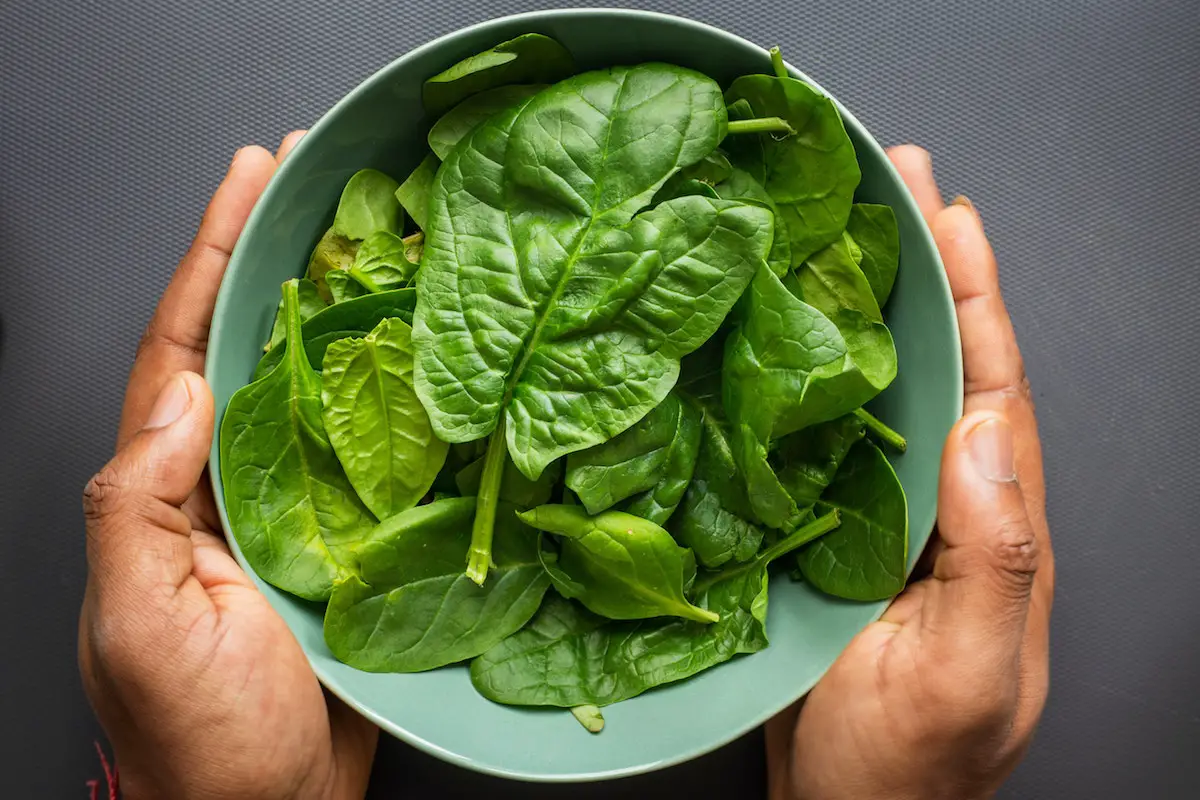
The world buzzes with excitement for the well-known animated show featuring Popeye the Sailorman. Even young children learn about the advantages of eating spinach.
The animation exaggerates the benefits, but it helps parents persuade their children to enjoy delicious foods that include green vegetables and importantly, spinach.
Spinach is a plant that flourishes in temperate climates once a year.
During its early growth stages, it forms rosettes with leaves of various shapes (oblong-ovate or smooth and grooved), which later develop into flowers.
The spinach you would eat at home consists of these same leaves before they reach their flowering stage.
Health Benefits
- Spinach’s low caloric content makes it a nutritious food choice.
- For enhanced healing and faster effects, it’s recommended to drink fresh spinach juice combined with carrot juice.
- Spinach leaves are particularly beneficial for individuals with anemia.
- While it’s not the iron muscle powerhouse the animation suggests, spinach is an excellent source of fiber.
Health Hazards
The genuine risk of eating spinach is restricted to those with allergies, particularly to iron, as spinach is iron-rich.
Moreover, consuming excessive amounts of spinach may cause stomach upsets or diarrhea in some people.
2. Green Leaf Lettuces
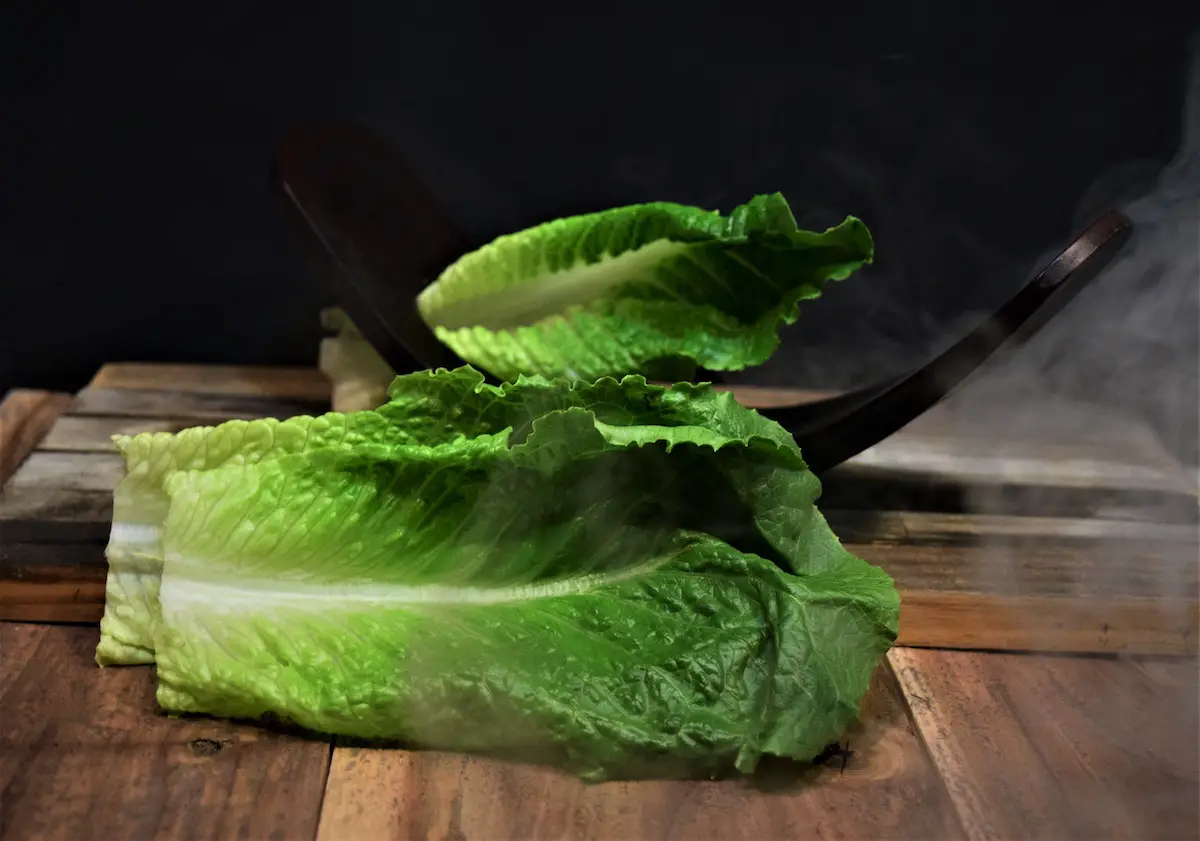
Despite its simple appearance, lettuce is rich in vitamins B1, A1, B2, C, D, and E.
Compared to spinach, lettuce has less protein, fats, carbohydrates, and sodium.
Lettuce is especially beneficial in spring when our bodies crave vitamins.
Romaine Lettuce
The outer dark green leaves contain more vitamin C and carotene than lighter, inner leaves.
Romaine lettuce has longer, thicker leaves compared to other lettuce varieties.
Nutrition experts suggest serving lettuce before the main course to stimulate gastric juice production and aid digestion.
Chefs advise cutting lettuce leaves, then drizzling them with vinaigrette and olive oil, adding vinegar first so it’s absorbed by the leaves before adding oil.
Lettuce is the perfect topping for burgers.
Health Benefits
- Lettuce has anti-inflammatory and antibacterial properties.
- It hydrates the body.
- Lettuce is a source of omega-3 fatty acids.
- It can improve hair and skin appearance.
- Lettuce is ideal for dieting.
- It may help with insomnia.
Omega-3 fats support heart health, reduce plaque, and improve circulation, lowering hypertension and stroke risk. They also decrease bad cholesterol and blood pressure.
Lettuce’s rich nutritional content provides essential nutrients and vitamins for those on a diet. High in fiber and cellulose, it’s low in calories and fat-free.
Lettuce’s sleep-promoting ability is attributed to the phytonutrient lactucarium, which soothes the nervous system. Eating lettuce at dinner or before bedtime is beneficial.
Health Hazards
Overconsumption or eating contaminated lettuce can cause stomach issues and diarrhea, similar to spinach. Thoroughly wash each lettuce leaf before making a salad.
3. Microgreens
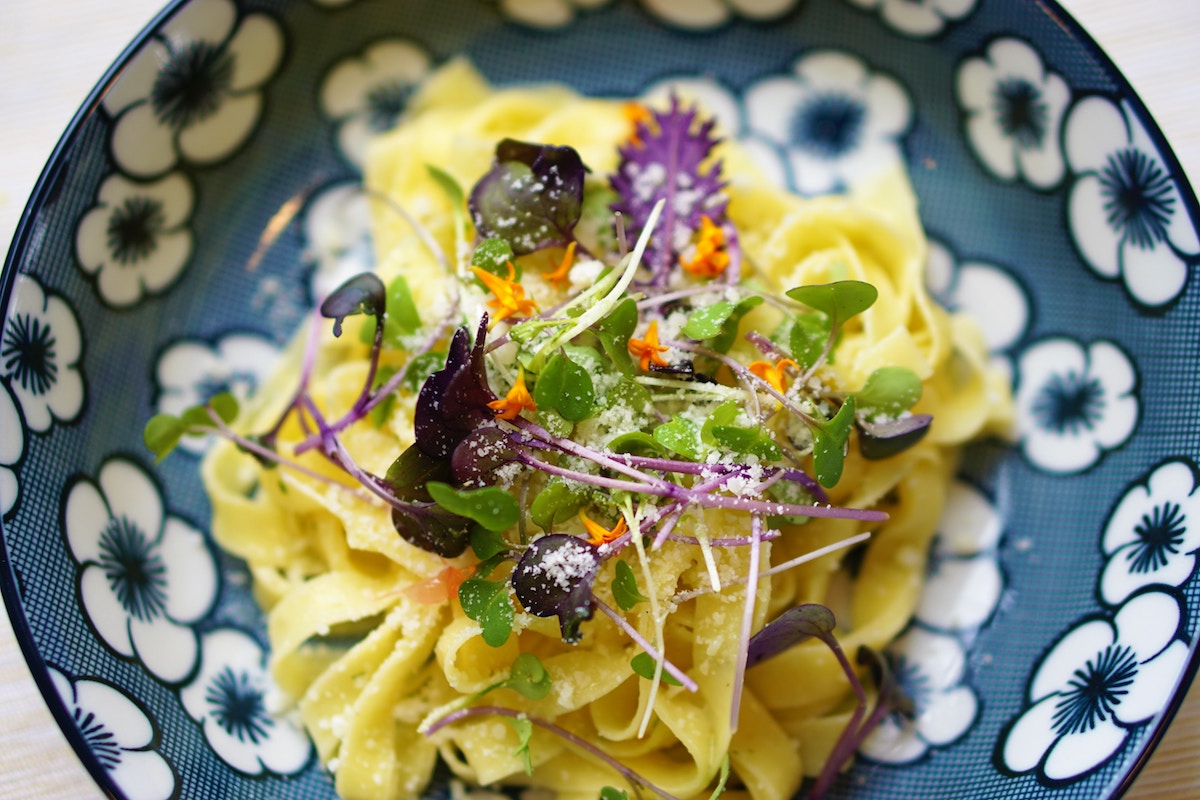
Microgreens consist of herbs and vegetables harvested during their seedling stage, before adult leaves develop.
These tiny plants have gained culinary popularity for their rich flavor, high vitamin content, and quick, easy growth.
A USDA study revealed microgreens contain 5 to 40 times more nutrients than mature plants.
Their big-bodied taste entices chefs, prompting many US restaurants to cultivate microgreens in-house for patrons to see. This trend continues to grow as they are perfect for garnishes or vegetable stocks.
For instance, microgreen basil has a more pronounced flavor than regular basil. Parsley microgreens taste similar to mature parsley, but the difference is noticeable.
The best part? Microgreens can be grown at home and are ready to harvest in just a few weeks.
Health Benefits
- Immunity boost: Most vegetables can enhance immunity. Microgreens offer the same nutrients and minerals but in higher concentrations.
- Cancer prevention: Microgreens from polyphenol-rich vegetables can provide similar cancer-fighting benefits.
- Heart disease risk reduction: Polyphenol-rich veggies promote heart health due to their antioxidant properties. Microgreens from these sources offer similar benefits.
Health Hazards
Microgreens are generally safe to eat. However, it’s crucial to buy seeds from reputable stores to avoid contamination with Salmonella or other diseases.
By starting with healthy, secure seeds, you minimize the risk of contamination when planting at home.
4. Swiss Chard
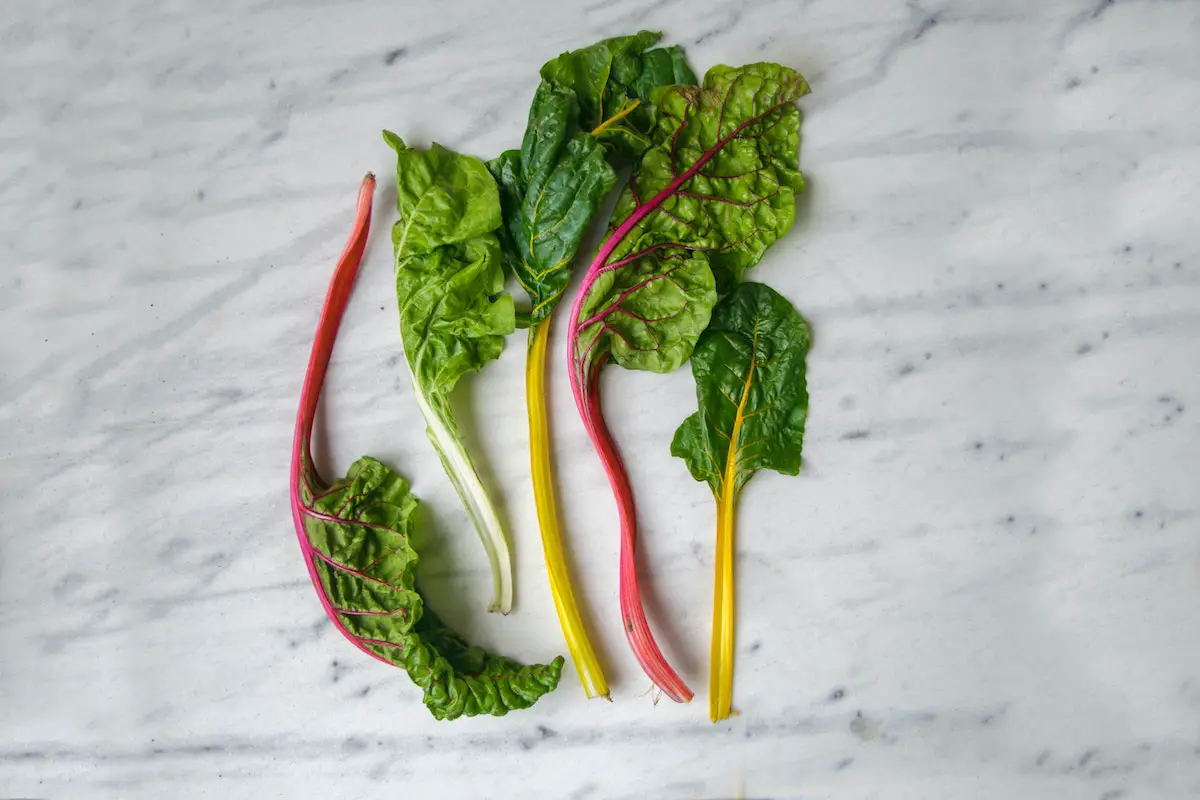
Chard is a vibrant green vegetable prevalent in Mediterranean cuisine.
Favored in Italian dishes like risotto and pizza, Swiss Chard is most popular, with gold and red varieties available too.
Regardless of color, this versatile vegetable is easy to cook and offers numerous health benefits.
Chard species boast various stem colors, such as a yellow gold, white, and red.
Young, tender chard leaves can be enjoyed in salads, much like spinach or other leafy greens. Stems are trimmed since they aren’t suitable for raw consumption, but they cook easily.
Older leaves are better cooked or stewed, making ideal pie fillings or accompaniments to soups, purees, or dishes like ground turkey wrapped in cabbage.
Health Benefits
- Blood pressure reduction: Chard consumption enhances athletic performance and supplies minerals like magnesium, calcium, and potassium, which counteract hypertension.
- Cancer prevention: Chard’s chlorophyll content may counteract cancer-causing heterocyclic amines created by high-temperature cooking.
- Diabetes management: Chard’s antioxidant alpha-lipoic acid helps regulate high glucose levels and increase insulin sensitivity.
- Osteoporosis prevention: Vitamin K intake from chard strengthens bones, improving calcium absorption and reducing urinary calcium excretion. Low vitamin K intake correlates with higher fracture risks.
Health Hazards
Due to chard’s role in blood clotting, eating Swiss chard may reduce blood thinner effectiveness.
5. Curly Kale
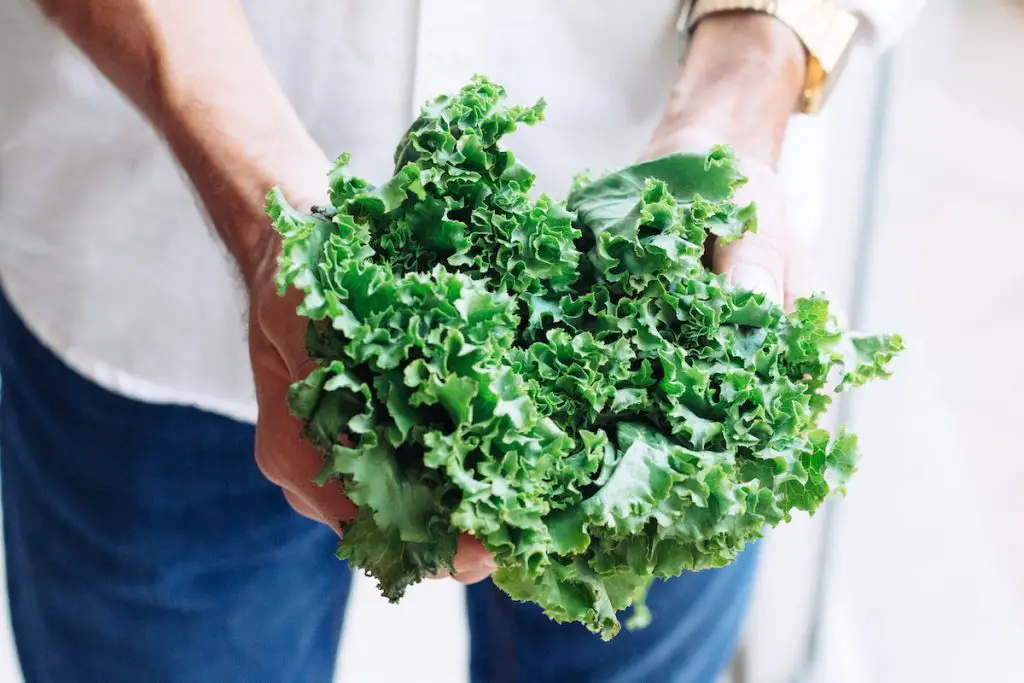
This vegetable is related to broccoli, cauliflower, and cabbage. Its green hue is appetizing. Kale is very versatile and can be a perfect substitute or replacement for many greens.
Remarkably, kale can thrive in highly polluted environments.
Cold weather resilience makes it a fresh winter food option, unlike other vegetables grown in greenhouses.
Long utilized in various cuisines, kale is now a versatile staple in soups, salads, and traditional dishes.
Kale smoothies are a nutritious blend of different varieties.
Packed with vitamins C, K, and A, carotenoids, and minerals, kale is considered a superfood.
For weight loss plans, consider this low-calorie green leaf, offering only 36 calories per serving while supplying essential nutrients.
Health Benefits
- Cancer-fighting: Kale battles free radicals and toxins, reducing cancer risks.
- Obesity prevention: Aiding metabolism and digestion, kale promotes peristalsis and combats excess weight.
- Osteoporosis prevention: Kale’s calcium content strengthens bones, decreasing osteoporosis likelihood.
Health Hazards
Due to high vitamin K content, those on blood thinners should exercise caution, as vitamin K plays a significant role in blood clotting.
Individuals with kidney issues should monitor kale consumption, as excessive potassium can strain kidneys, potentially leading to severe consequences.
6. Rocket Arugula
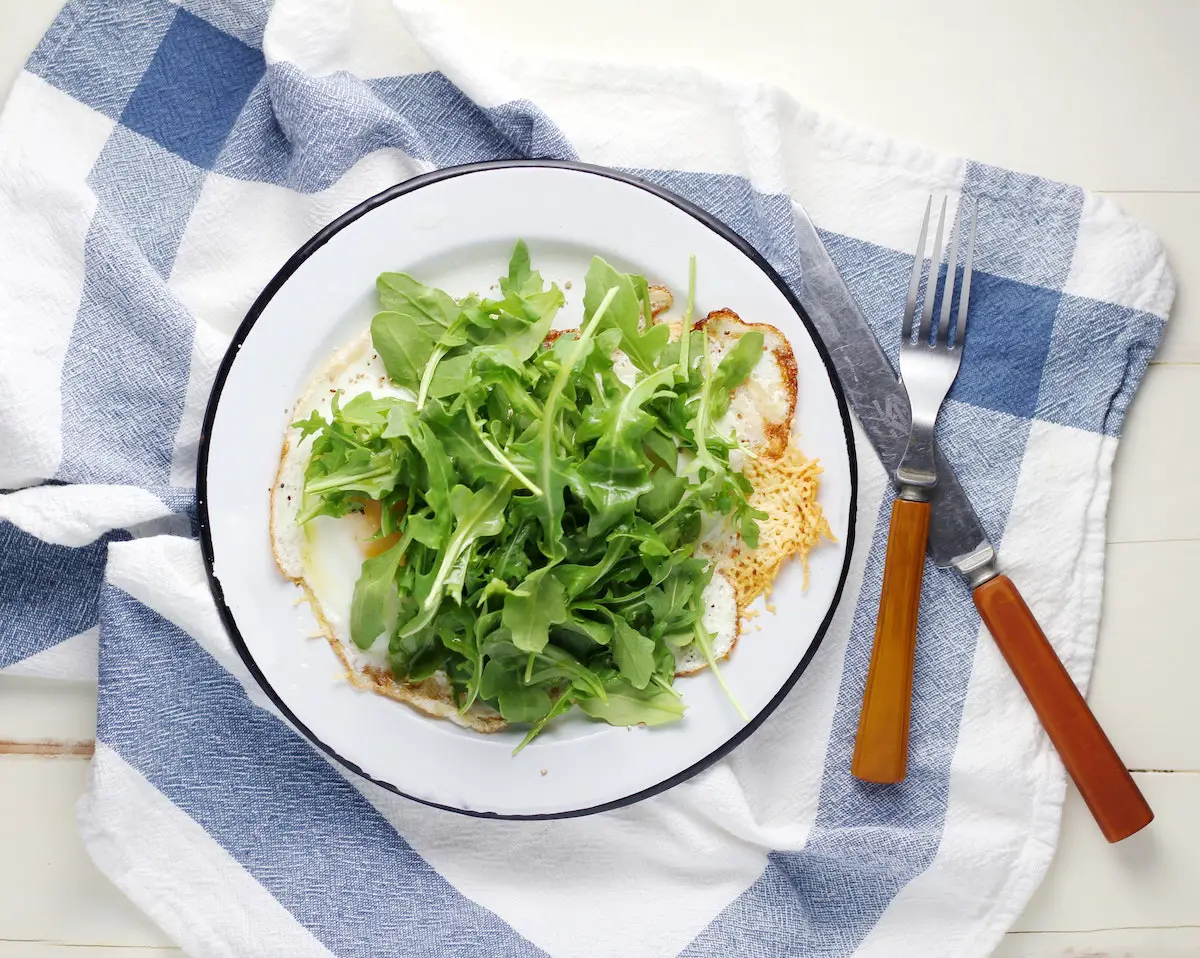
Arugula’s origins trace back to Ancient Rome, where it was employed as a spice.
This plant’s seeds were considered an aphrodisiac. Today, arugula enjoys global popularity.
Cultivated in various regions, its piquant leaves are cherished for their numerous health benefits.
Arugula’s distinct flavor either enthralls or repels. Frequently used in mixed salads, arugula is also a popular pizza topping in Italy.
Arugula’s taste is smoky, peppery, and robust, unlike milder leafy greens.
Health Benefits
- Immunity boost: Rich in minerals and vitamins, arugula supports our immune system. Its copper content promotes white blood cell production, while its vitamin C helps maintain overall health.
- Free radical combat: Arugula’s antioxidant properties counteract damage from free radicals.
- Vision improvement: Carotenoids in arugula support eye health by slowing macular degeneration, which causes vision loss or reduction.
Health Hazards
Arugula’s high vitamin K content may interfere with blood thinners’ effectiveness.
Nonetheless, arugula is generally safe and nutritious for consumption.
Frequently Asked Questions
Which leaves do we eat as food?
There are many types of leaves that are commonly eaten as food, including spinach, lettuce, kale, collard greens, and chard. These leaves are often used in salads, smoothies, soups, and other dishes as a source of vitamins, minerals, and fiber.
Which leaves can be eaten raw or cooked?
Many leaves can be eaten raw or cooked, depending on personal preference and the type of leaf. Some common examples of leaves that can be eaten raw or cooked include spinach, lettuce, arugula, and kale. Other leaves, such as cabbage or collard greens, are typically cooked before eating.
What are the best tree leaves to eat?
While many tree leaves are edible, not all are palatable or safe to eat. Some commonly eaten tree leaves include grape leaves, bay leaves, and tea leaves. It’s important to properly identify any tree leaves before consuming them, as some may be toxic or harmful to humans.
What are the different types of leaf?
Leaves come in many different shapes, sizes, and textures, depending on the plant species. Some common types of leaves include simple leaves, compound leaves, needle-like leaves, and palmate leaves. Leaves can also be categorized based on their arrangement on the stem, such as alternate, opposite, or whorled.










